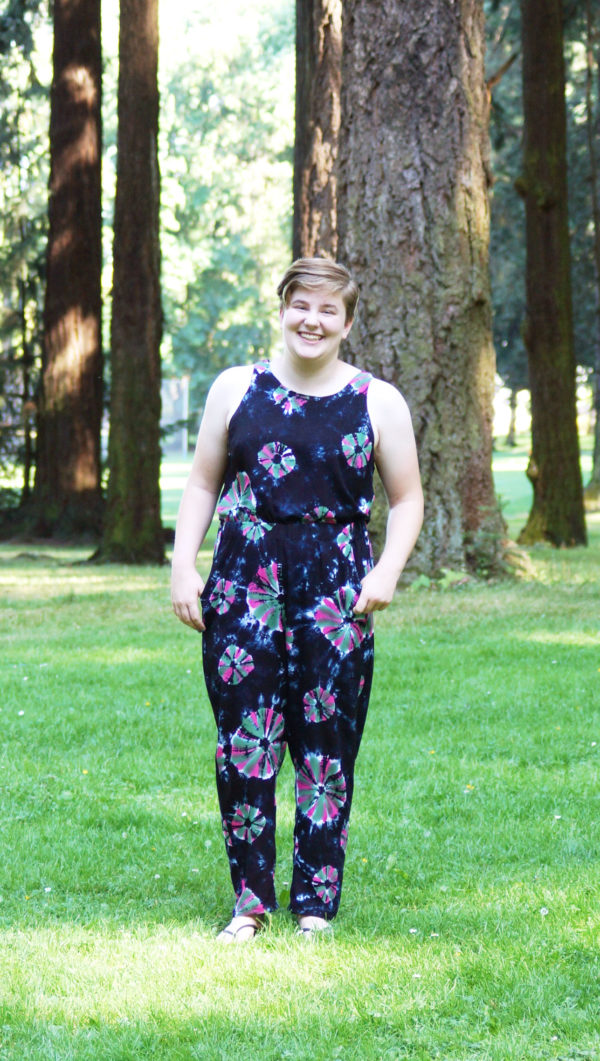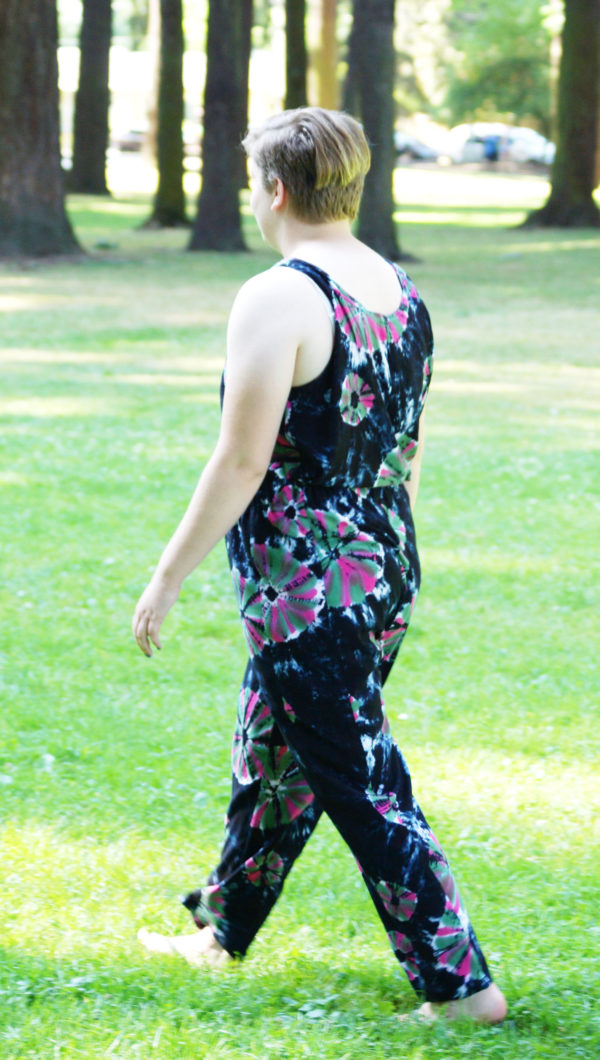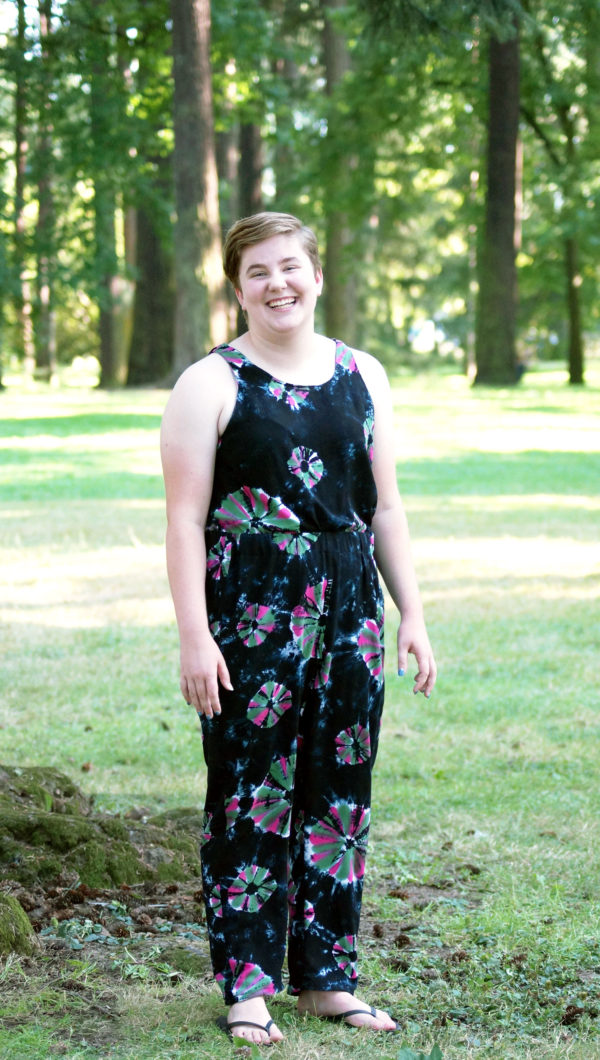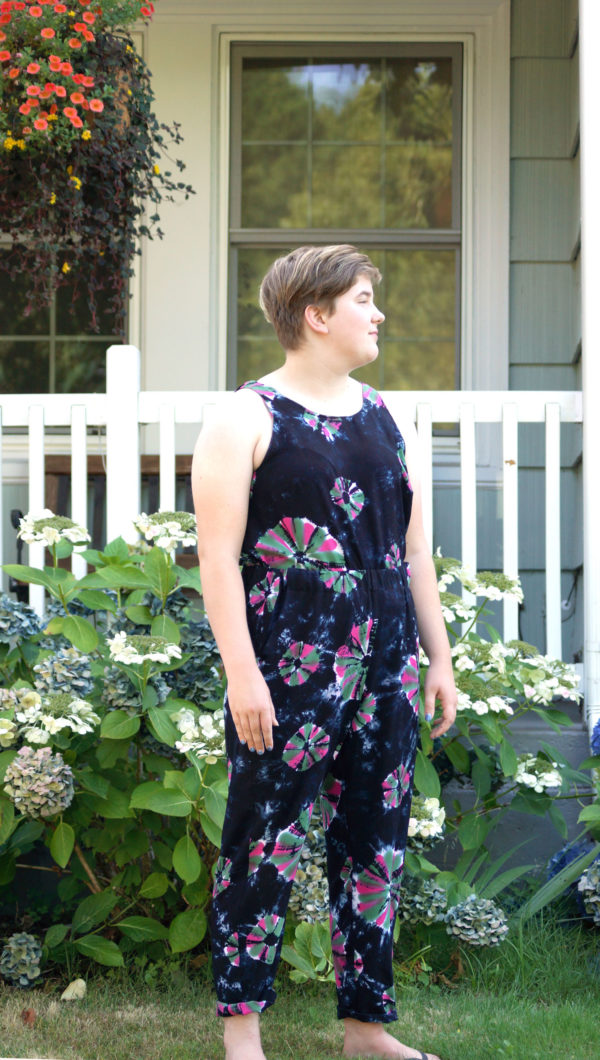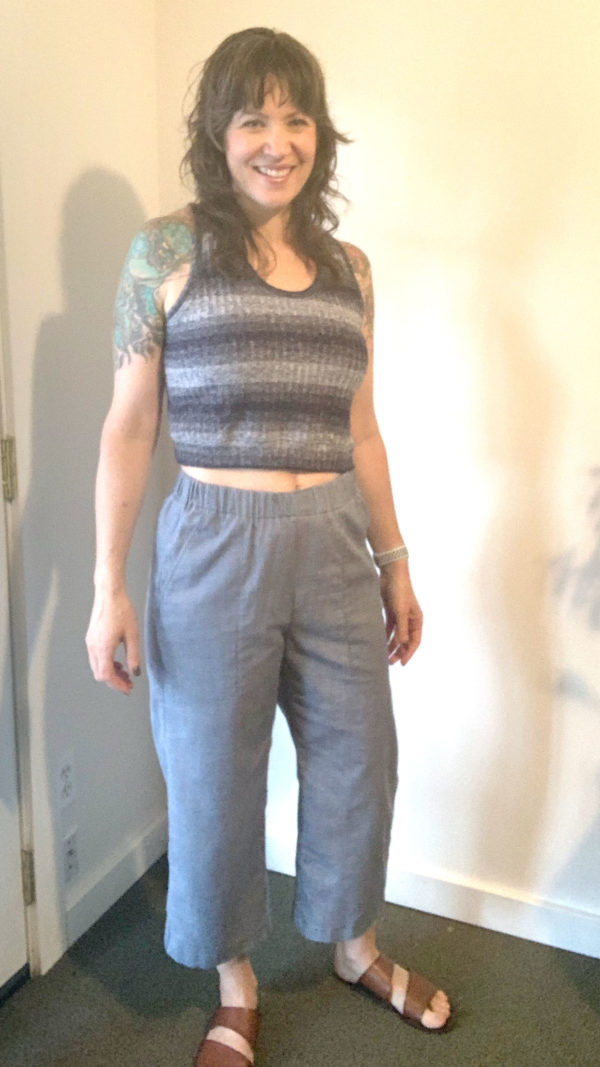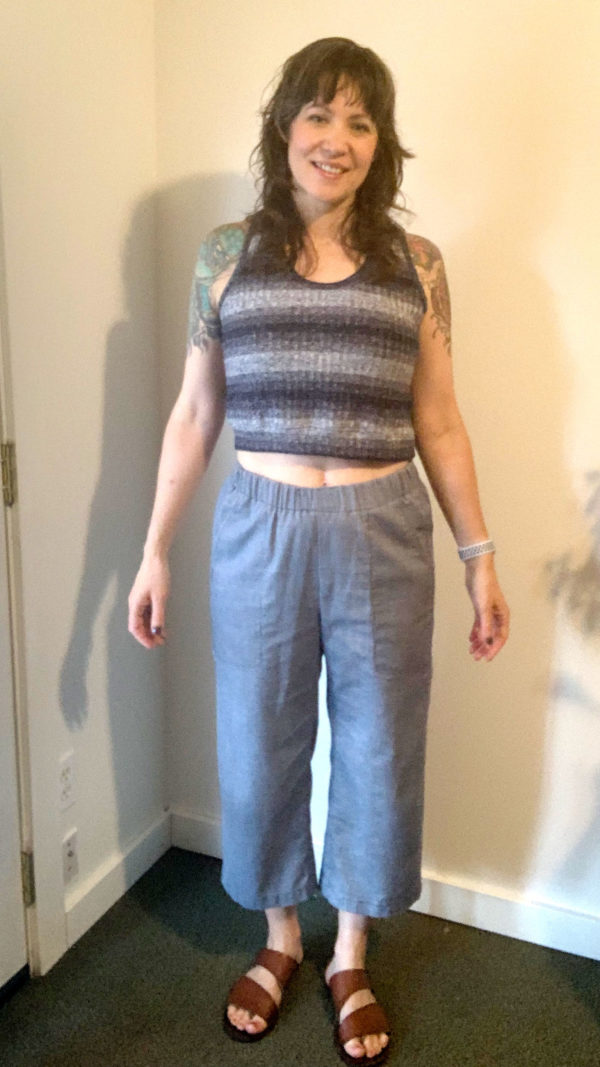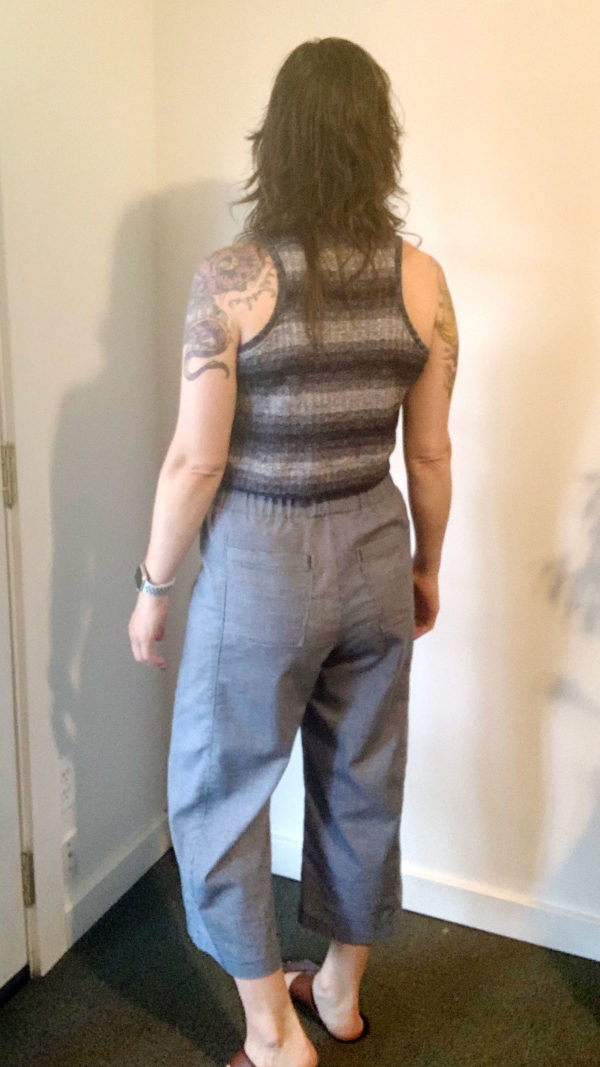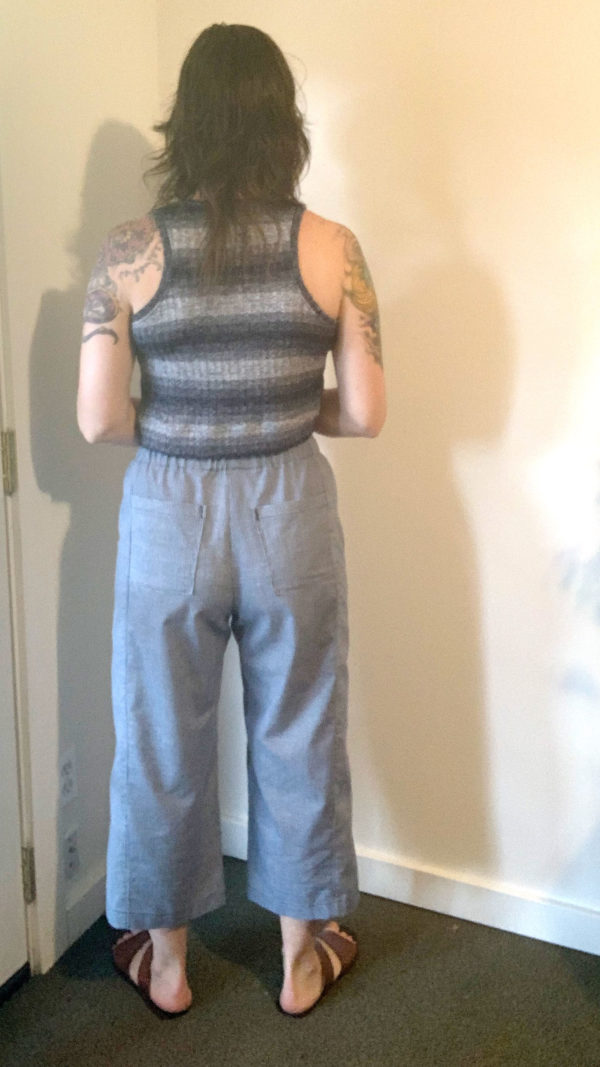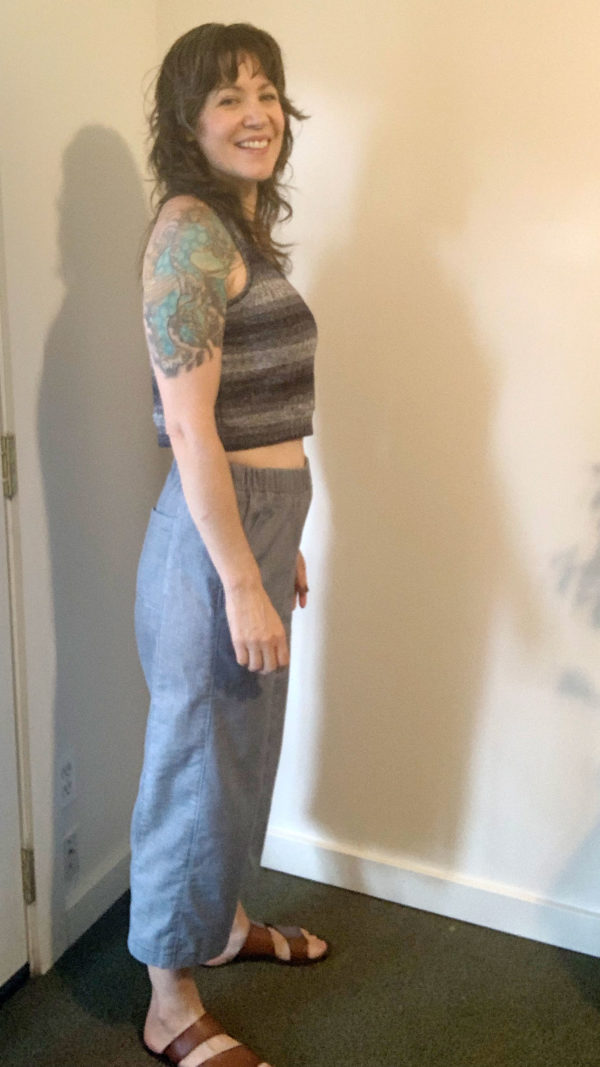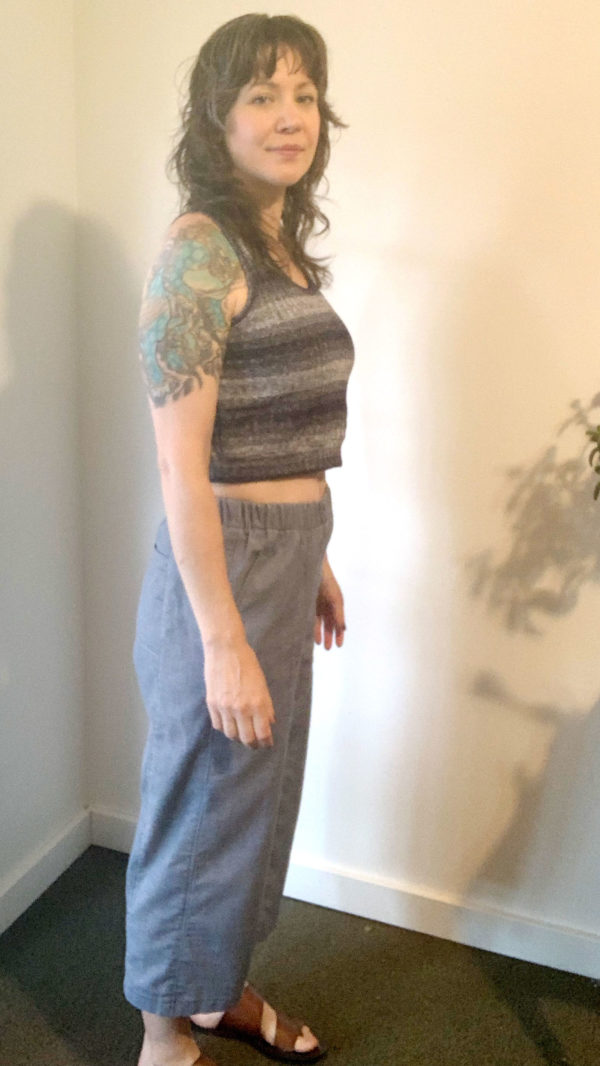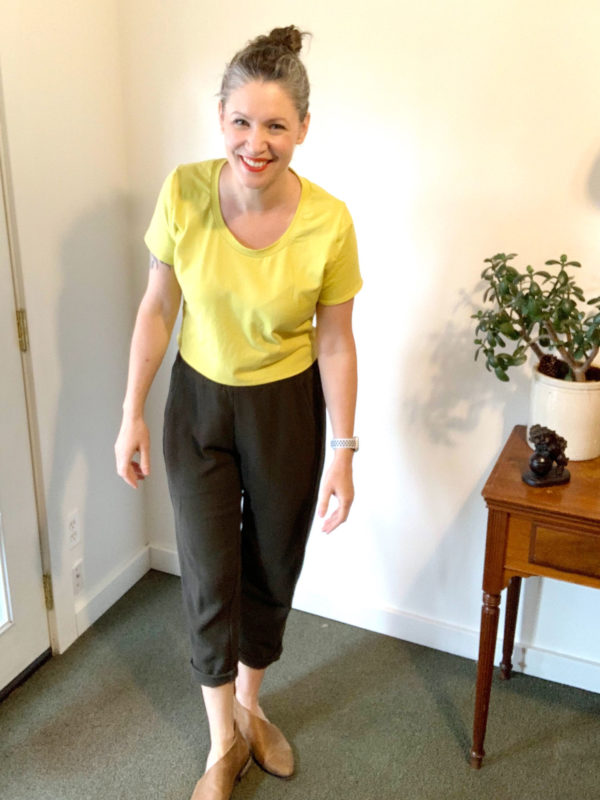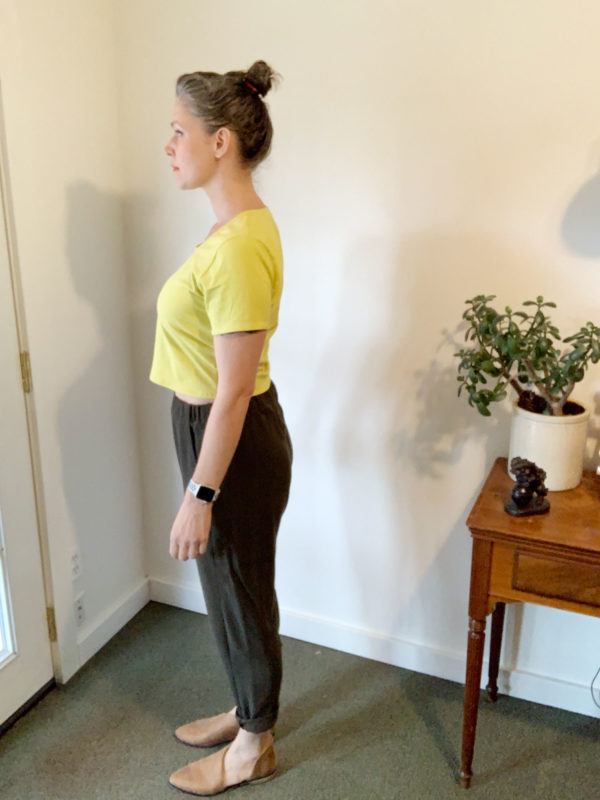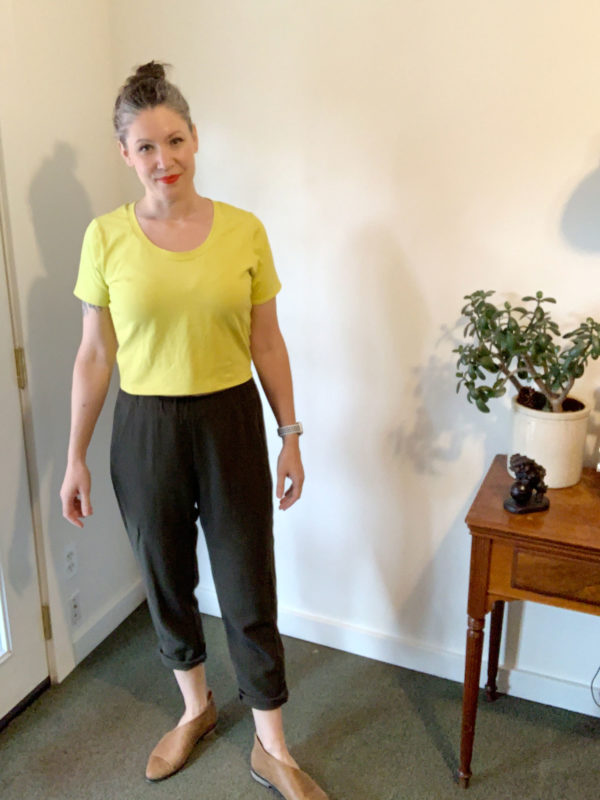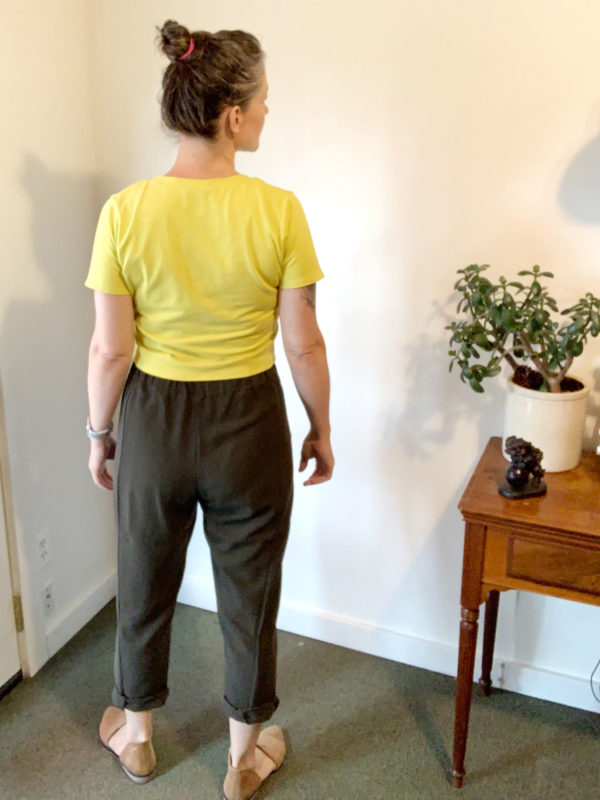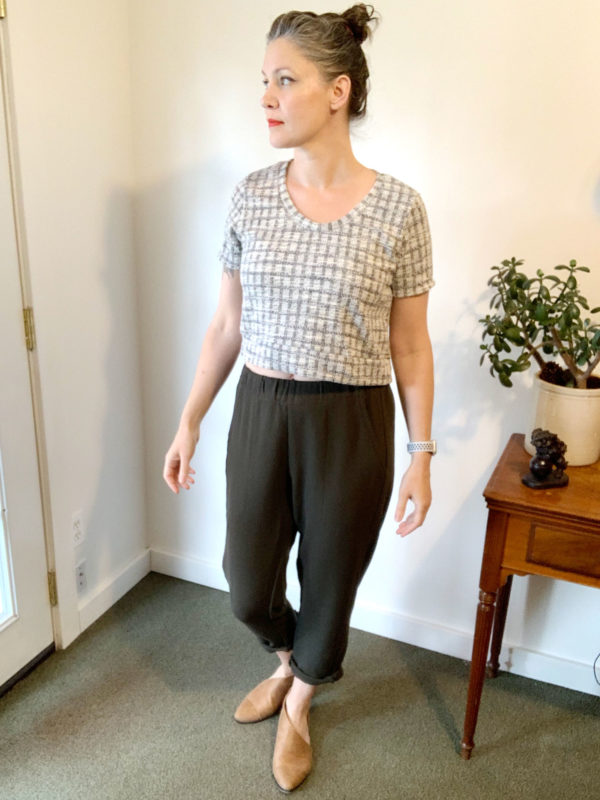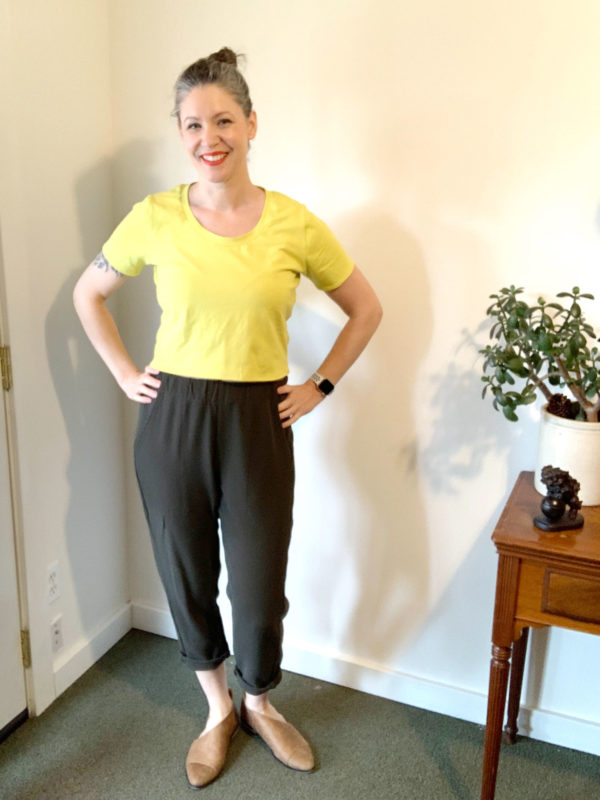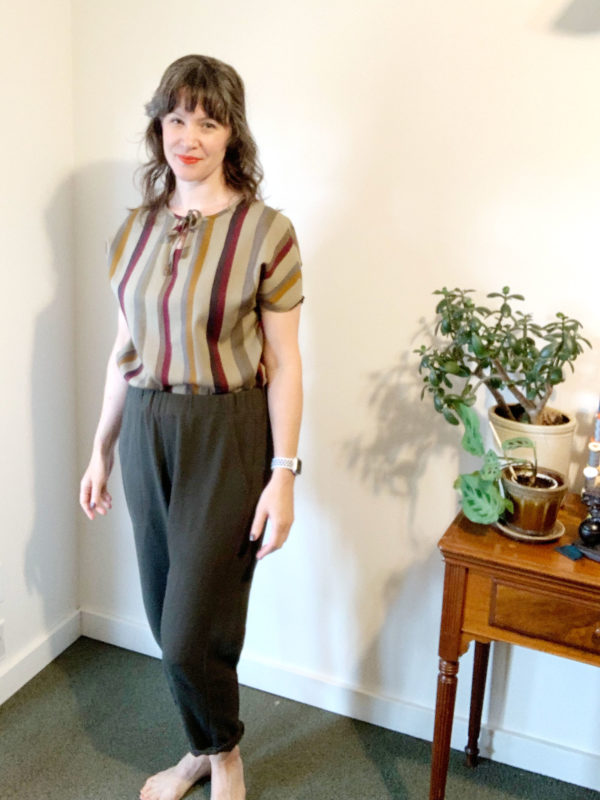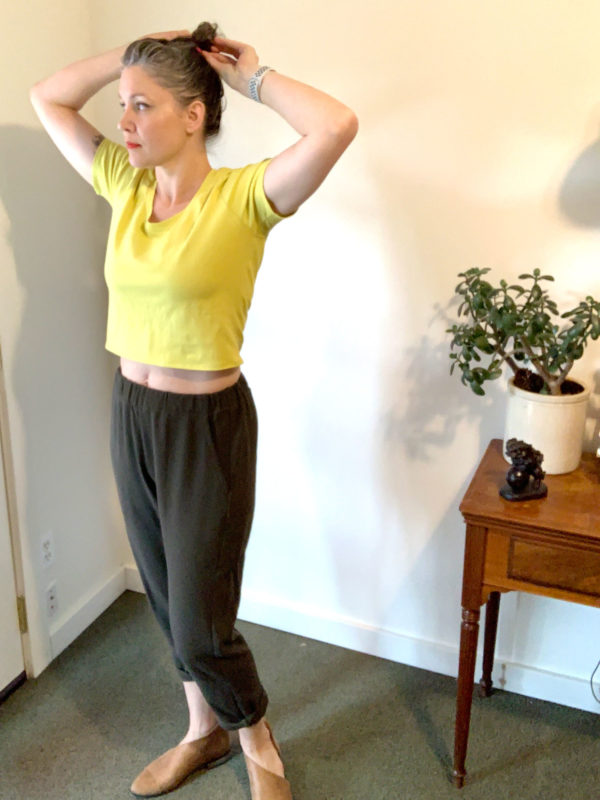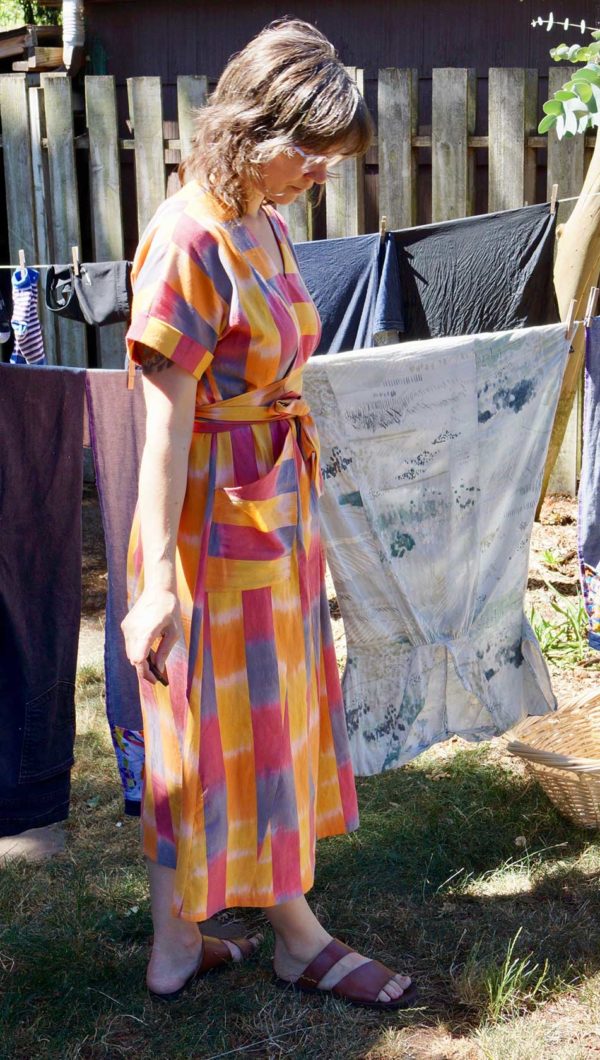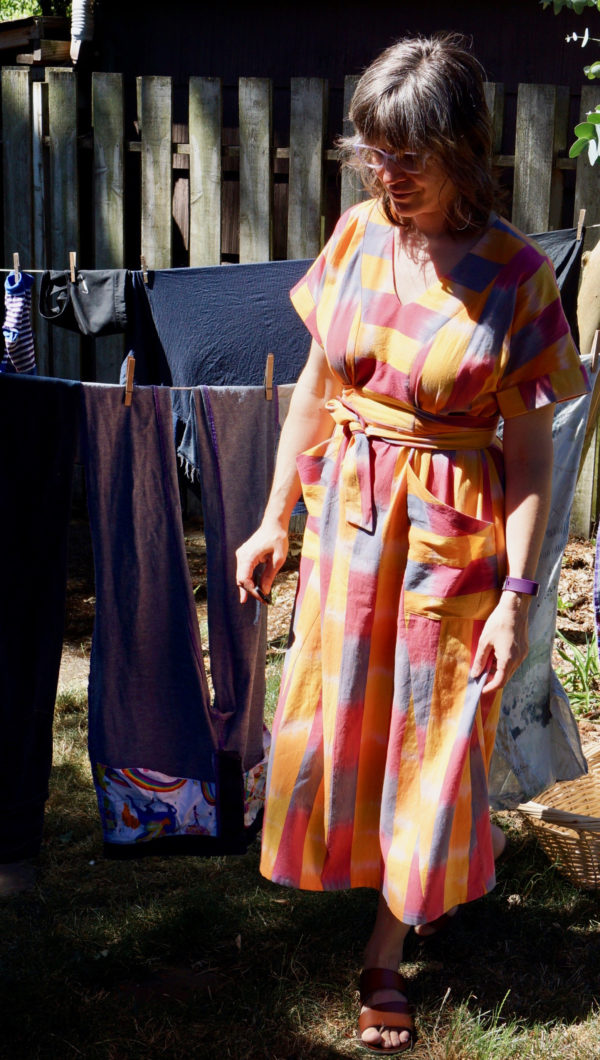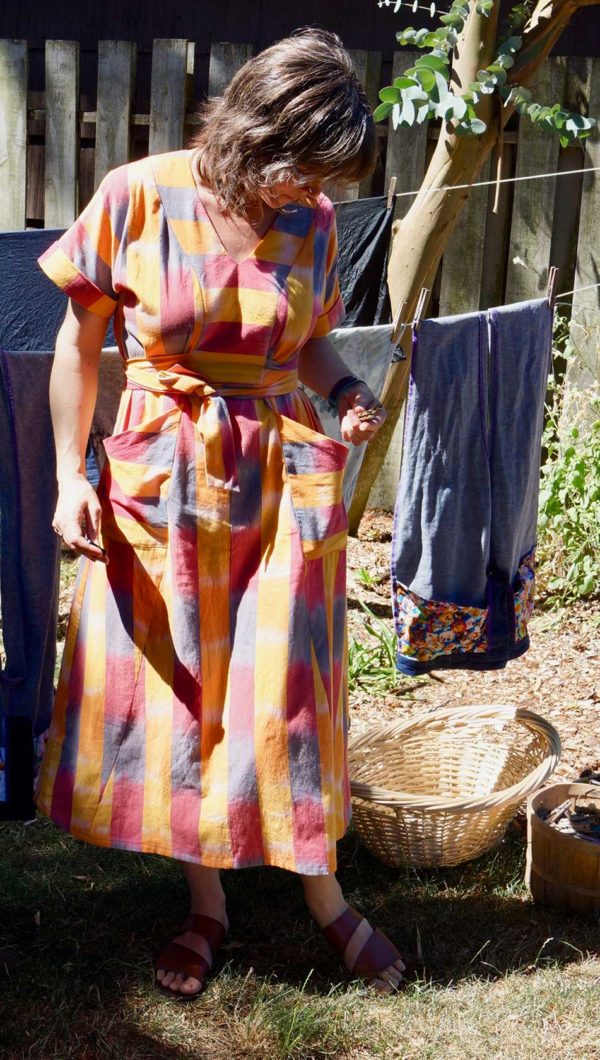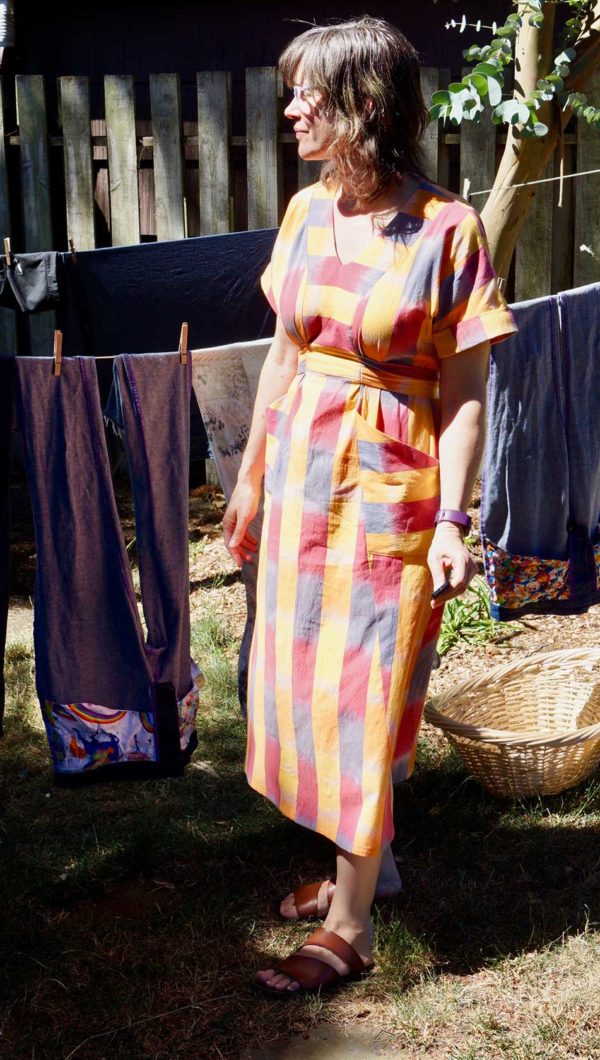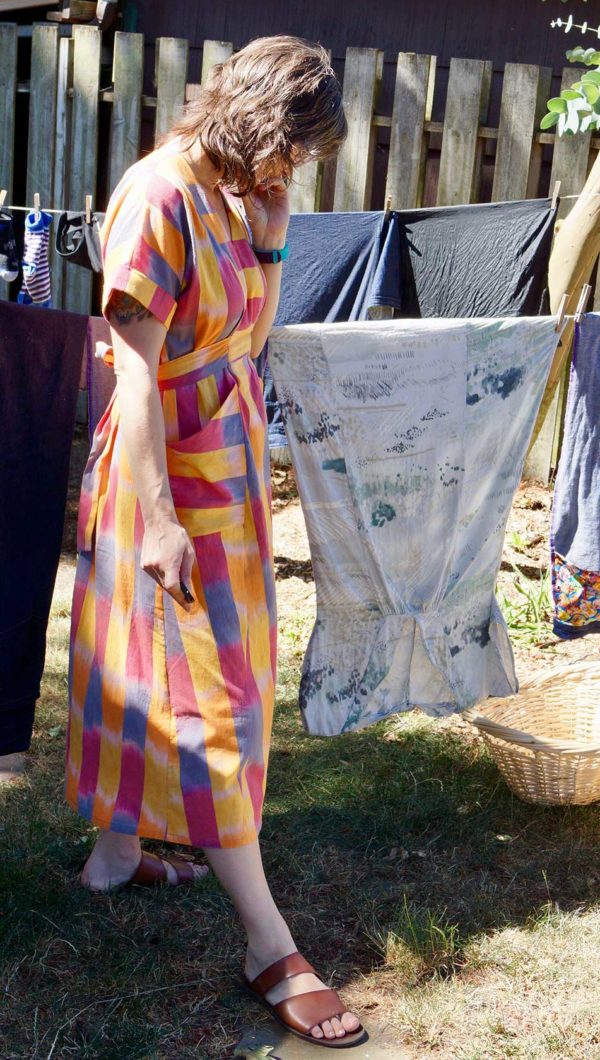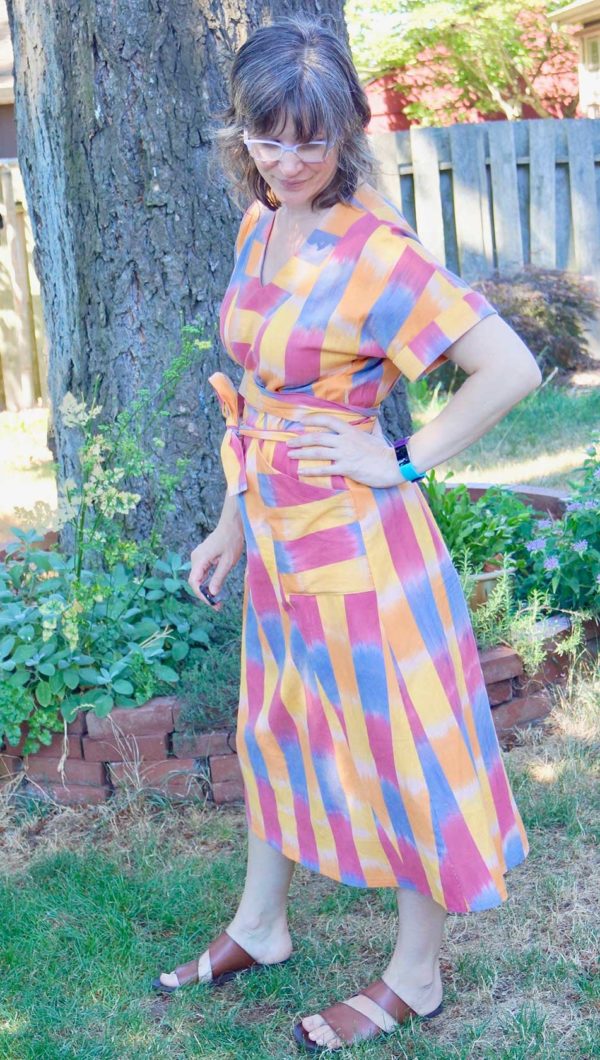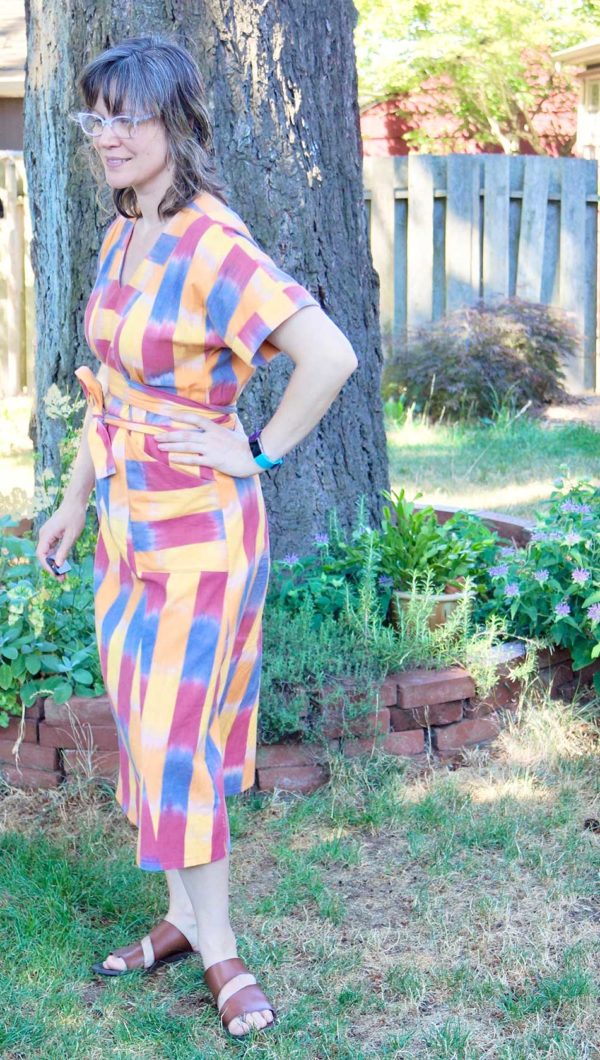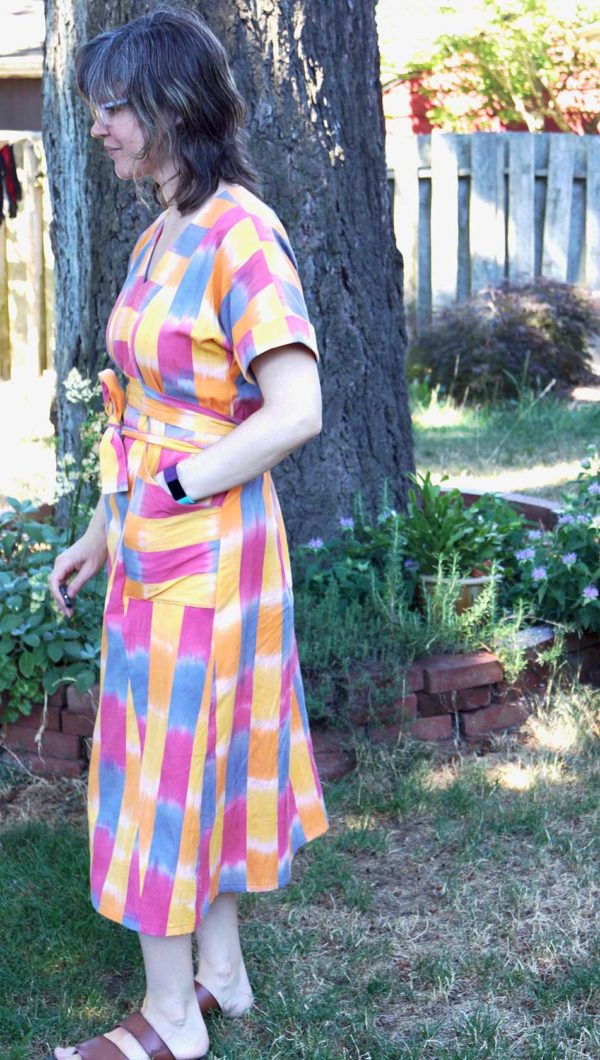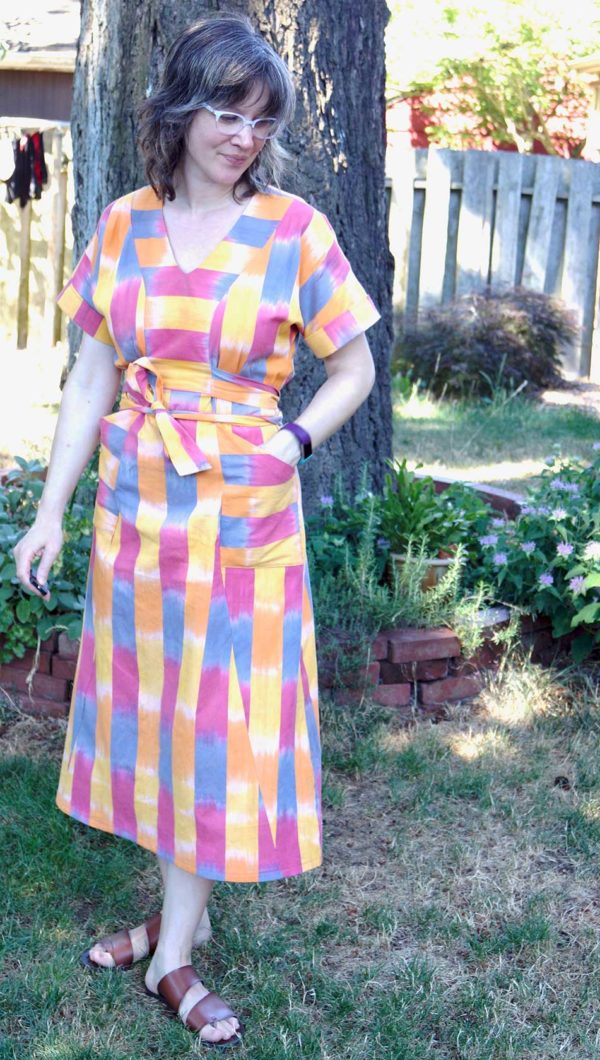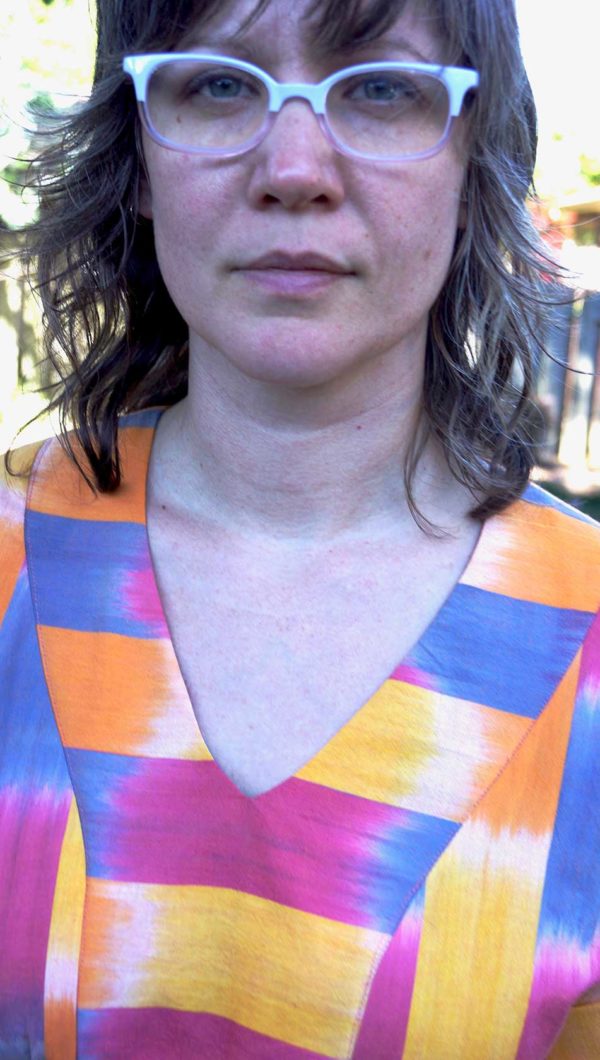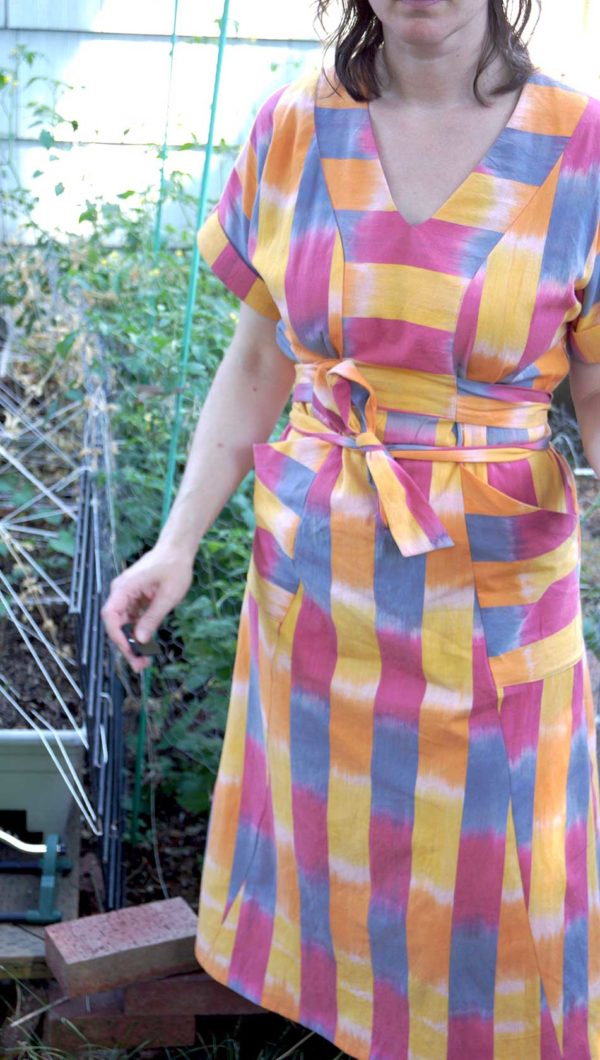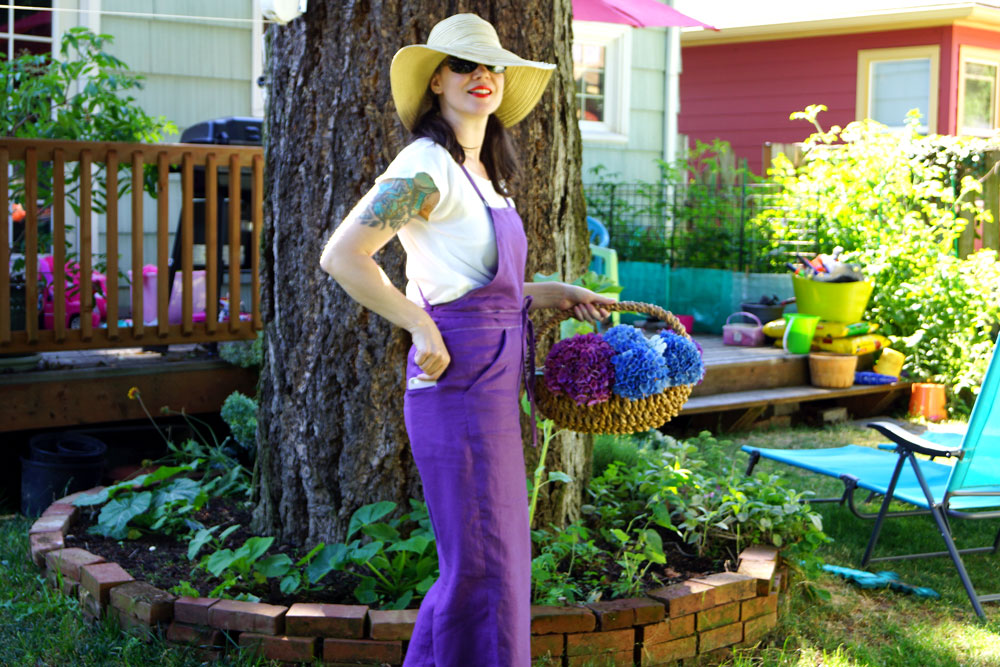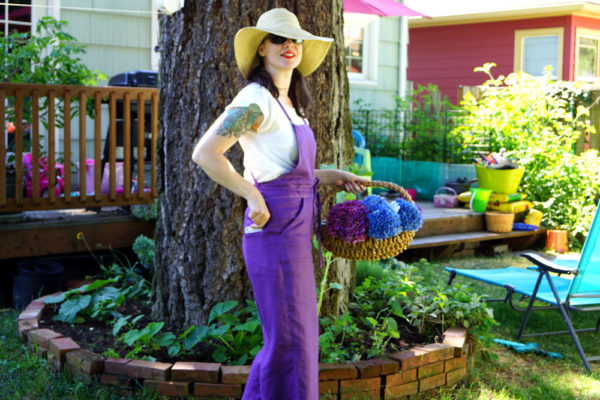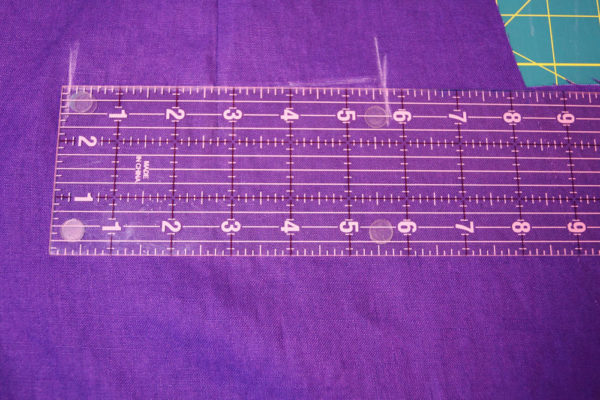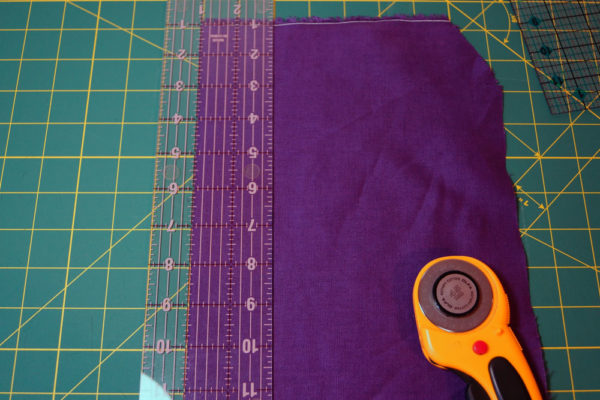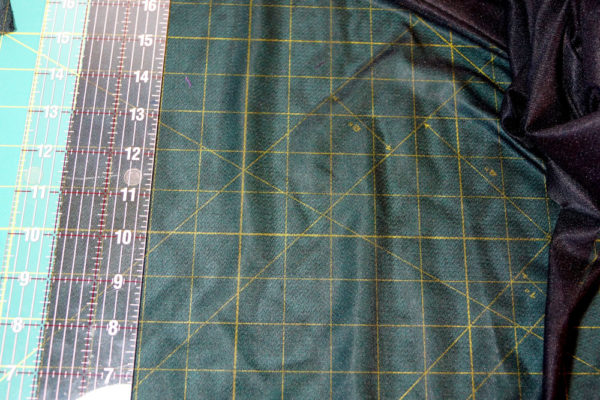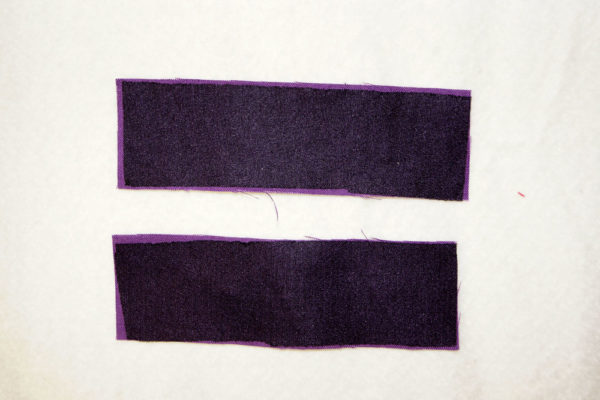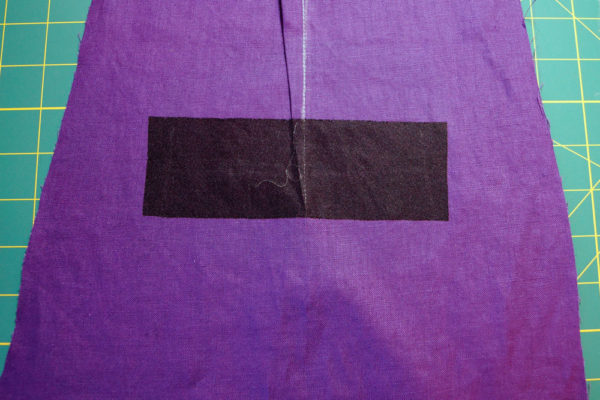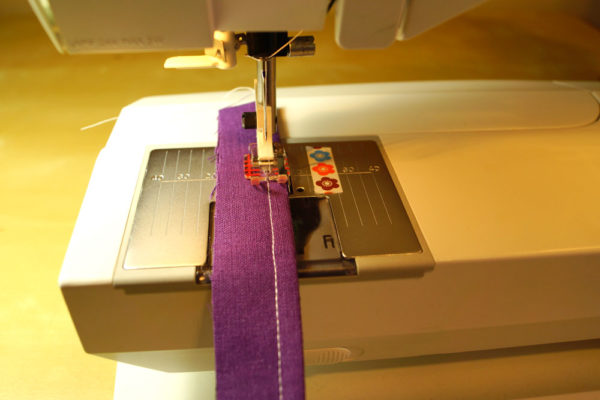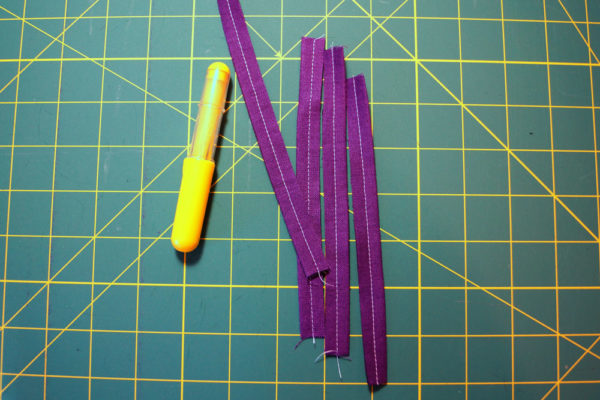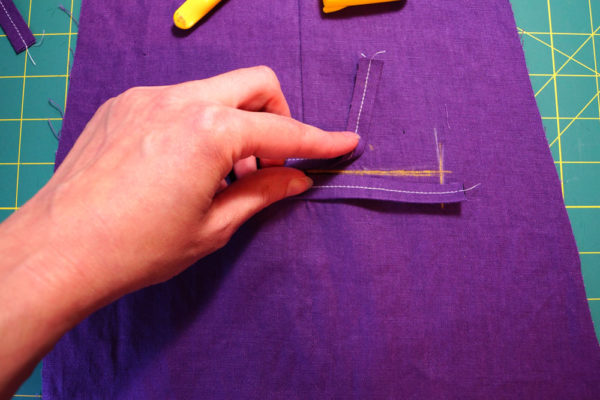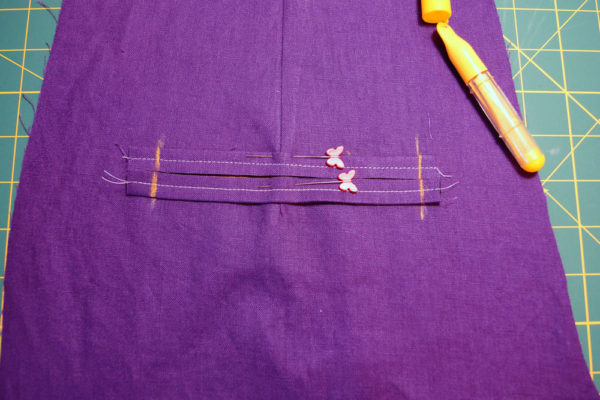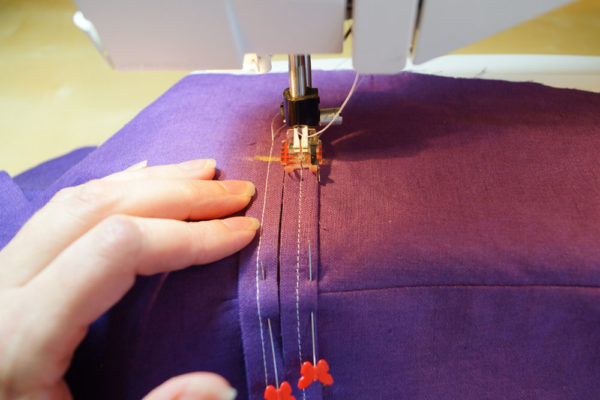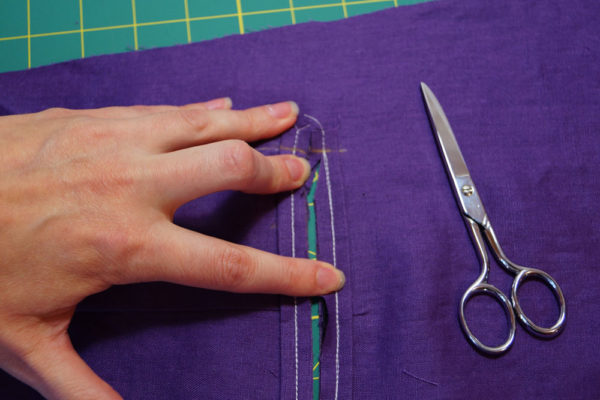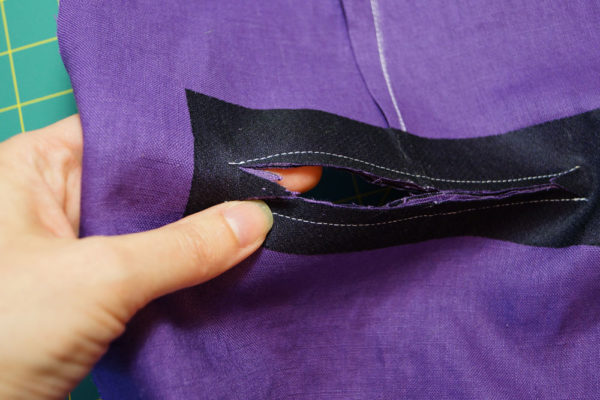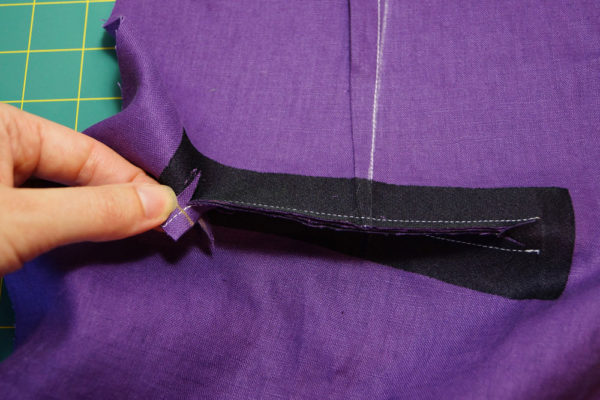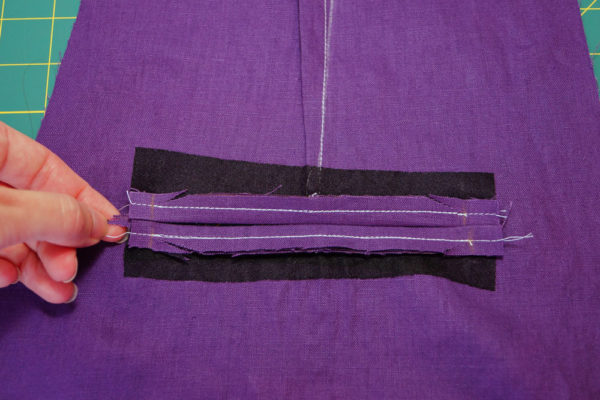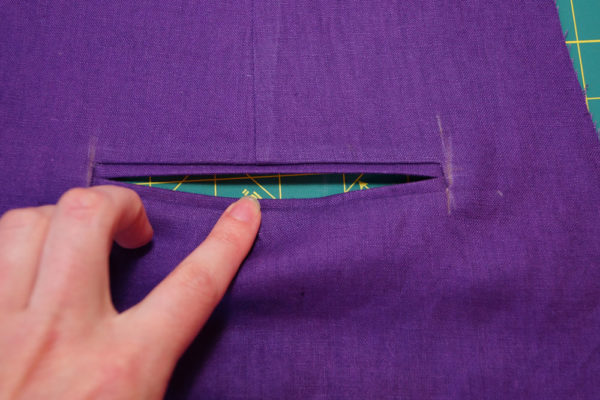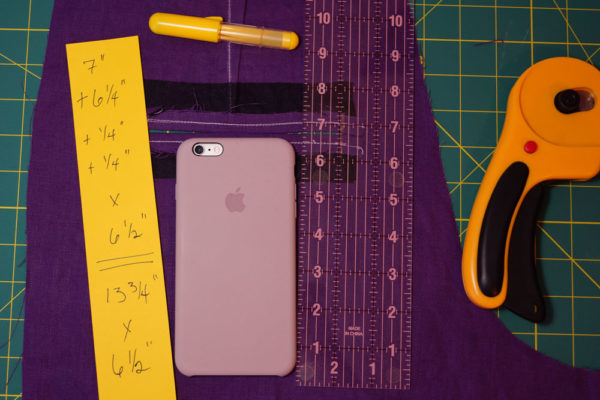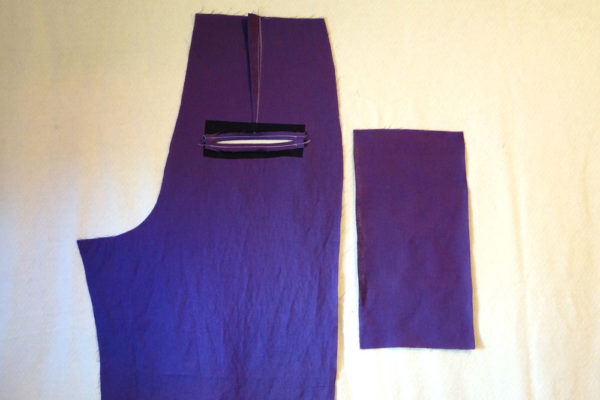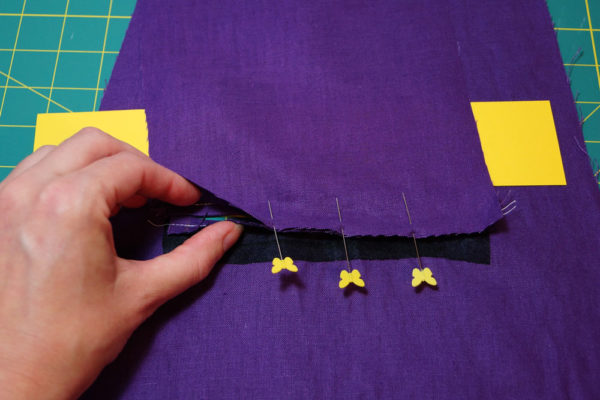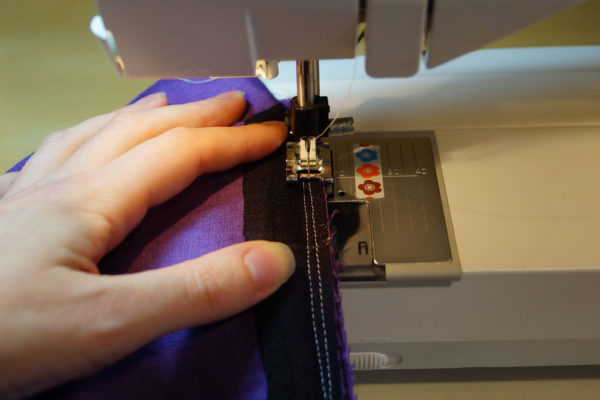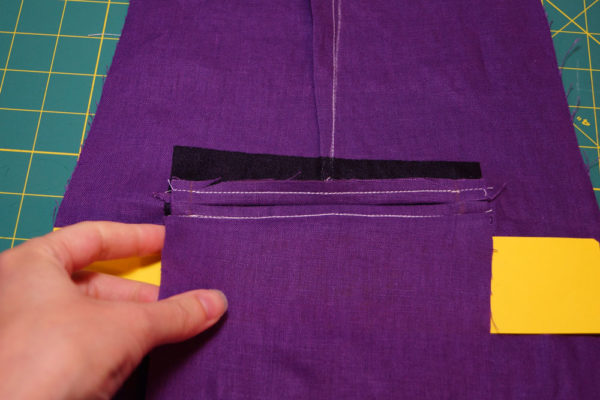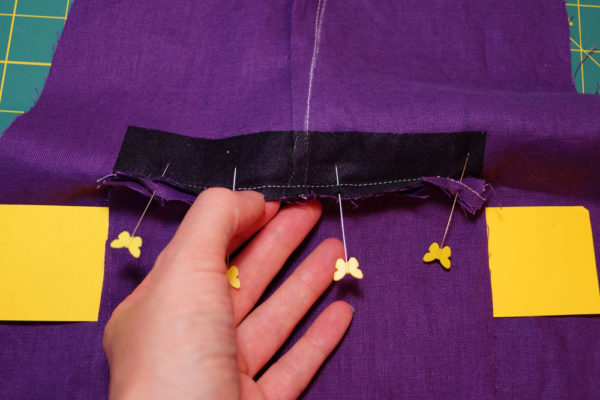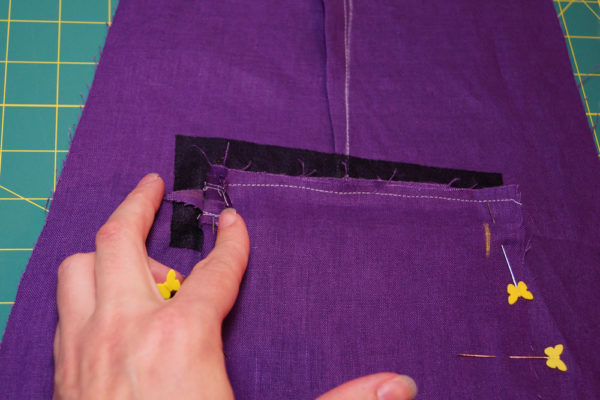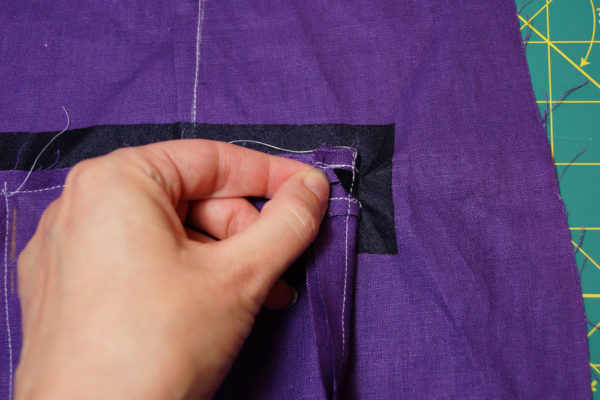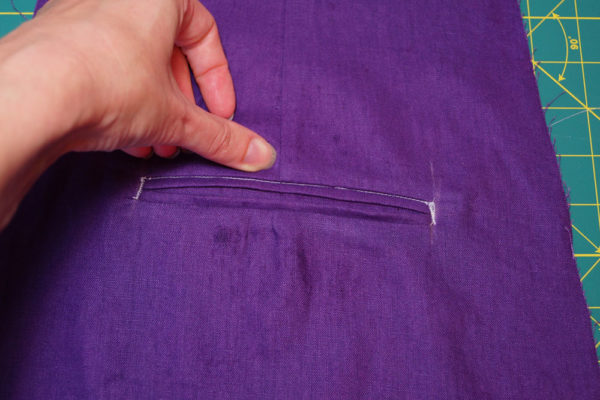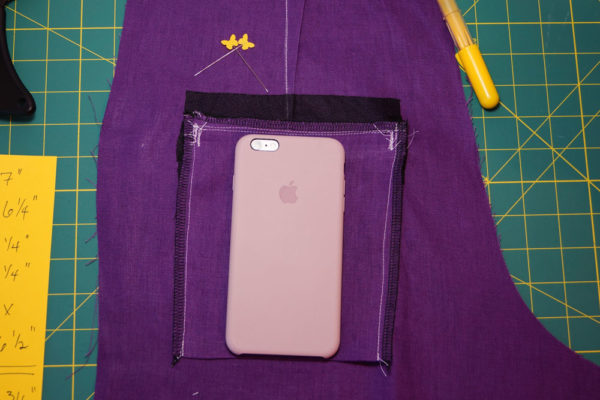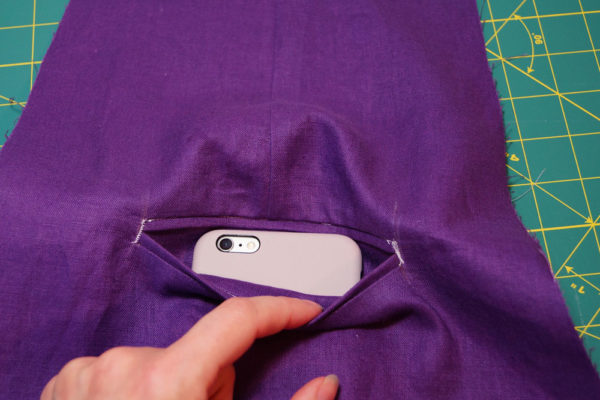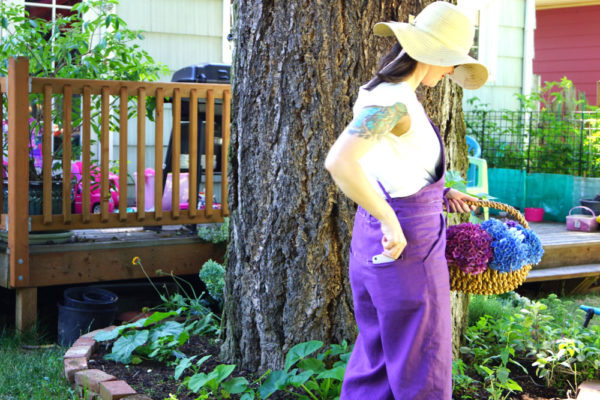Teaching kids to sew is so weird. I started off with the same things I always say, to anyone really, about anything; and that is: You can’t really break it. Not really. There’s always a fix. But there’s so much more when you’re teaching from zero.
Sure, I’ve let the kids sew here and there, but this was different. I got a machine specifically for them to use. I got a very lovely Janome Magnolia 7330. Most of the time when you think the Magnolia line, you think of those mechanical ones…this isn’t one of those. This one is really damn nice and smooth for the price.

So, with the value of this machine being quite the commitment, Hazel and I have been putting in some serious time learning how to use it.
Can I tell you a secret? I am learning SO MUCH.
Teaching someone from zero is…wow. There is a lot to learn! hahaha. No wonder people are so intimidated! In all fairness, I dabbled and quit quite a few times, so I shouldn’t be so surprised, but WOW. I forgot how much there is to know.
Case in point…I told her to press her seams to the back. She asked, “What does press them to the back mean?” I am so used to the language, I actually didn’t even realize how that could be jargon to the completely new. You ever want to be humbled, try teaching children.
Anyway, this post isn’t about me or Janome. This is about Hazel. Look what she did!

Let’s start where she did, with the pants. These are yet another Sew House 7 Free Range Slacks in View 1. I picked up some of this black rayon twill from the Sewing Studio on sale… It sews really really nicely. The weight is perfect for this pattern, and it has this tiny chevron twill weave that is really cool – as opposed to the usual just diagonal twill weave. I started Hazel on the more complicated pattern, to be honest. She took to it like a champ. Sure, there was some seam ripper work (she stole my favorite seam ripper during this time), there was some learning why we sew straight (good thing for pattern ease), and there was learning how to put in an elastic waistband.
She also learned the best parts:
- No one will ever know any of the mistakes you made, so take them to your grave.
- She got up at one point during the final parts of pants construction and said, “I’m actually really proud of that seam!”
- A serger is your BFF when working with woven seams (and mom will change the thread on that for you still.)
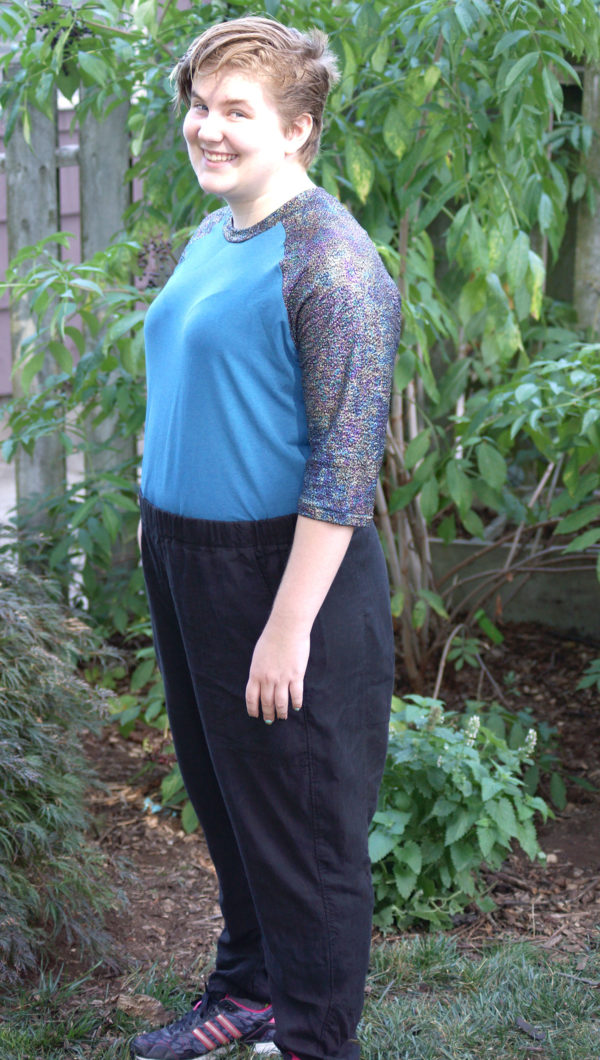
The shirt is a Thread Theory Sayward Raglan made with a bamboo knit and a goofy dance-activewear knit we saw in the remnant bin at Joann’s.
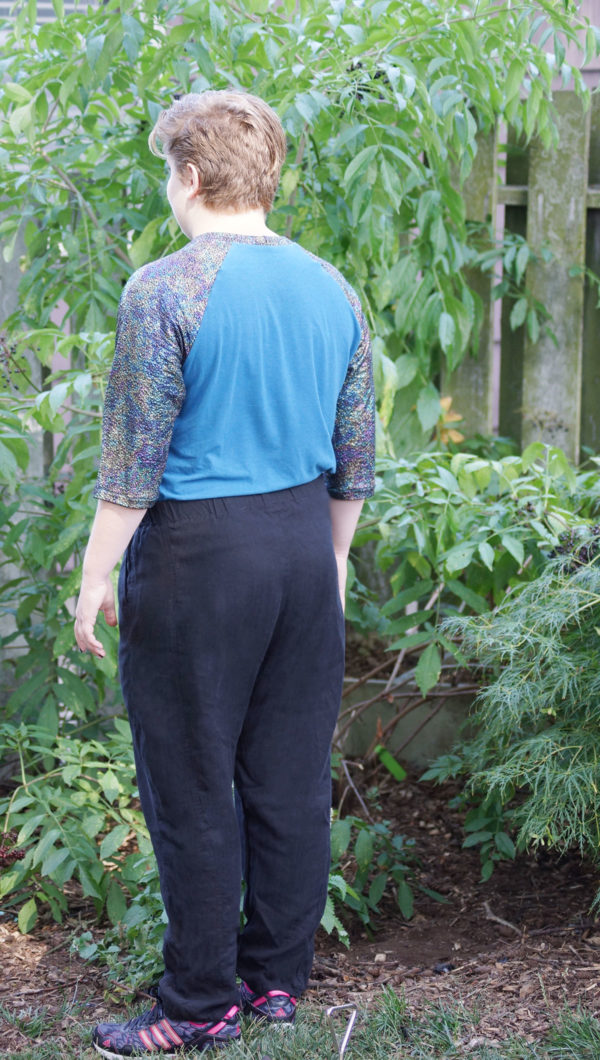
Yes, it is true. We built this entire outfit around rainbow-oil-slick-dance-fabric and we love it!
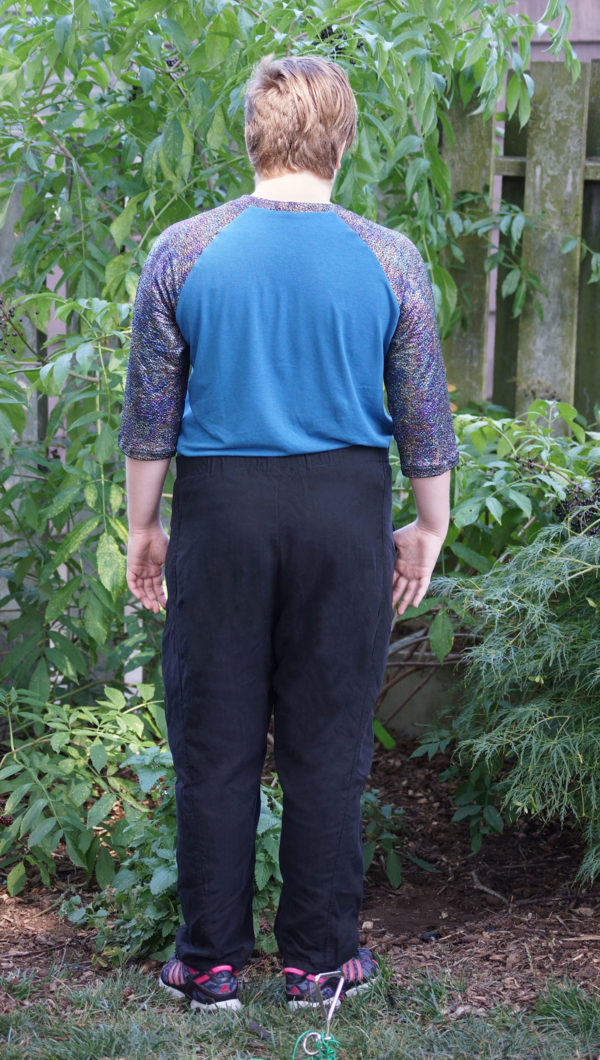
The SH7 pants are a size 16 and the Thread Theory raglan is a size Men’s Medium. Initially, I was looking for a women’s raglan…something more 70s, but I couldn’t find one that wasn’t boatneck. It’s easier to adjust the Thread Theory sleeves & shape than to redraw a neckline and binding, so I went with Thread Theory…that and I’ve had good luck with Thread Theory patterns.
Hazel has very strong…well, everything, from 8 years of BJJ and last year she was on a dragon boat team…so there honestly wasn’t a lot of altering on the raglan other than lengthening the sleeves and shaving off a 1/4 on all the seams at the waist. I do want to point out the Thread Theory pattern is drafted perfectly. That neckband sizing is SPOT ON. Look at how flat that is! LOOK AT IT!
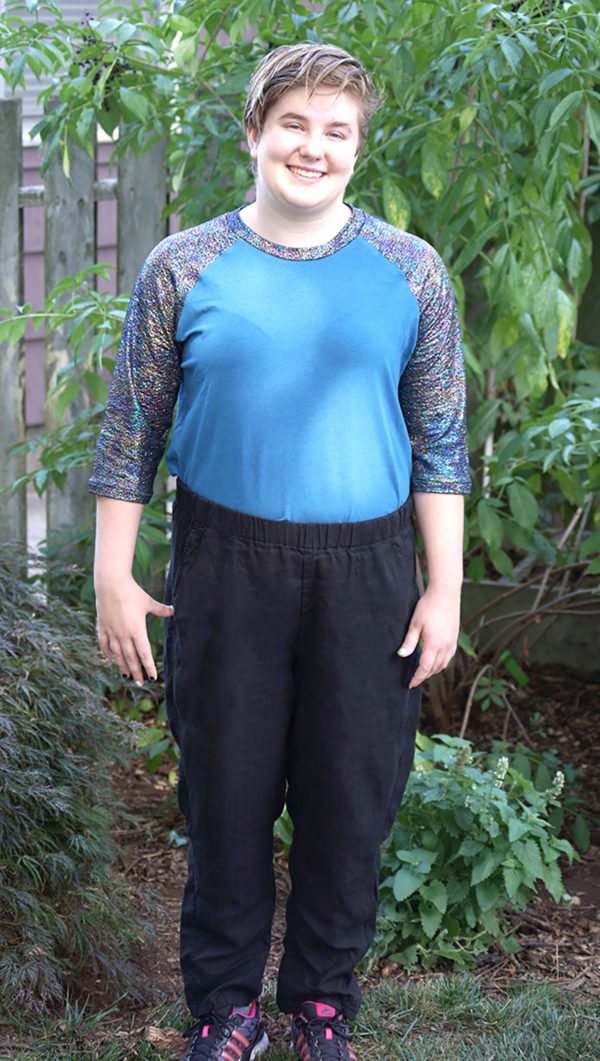
Sewing the shirt when a LOT faster. And here’s another tidbit about the Janome Magnolia. It doesn’t have a foot pressure adjustment option. SIGH. It has my favorite knit fabric stitch, the lightning stitch… BUT it just sort wants to bunch up the knit under the foot. ARGH. So…I ordered a walking foot. Hopefully that will make knits easier to sew because she REALLY loved zipping all the main seams together on my serger. Hazel did end up unpicking a few serged seams…but that’s ok. Why? Because in the end, you can’t really break it.
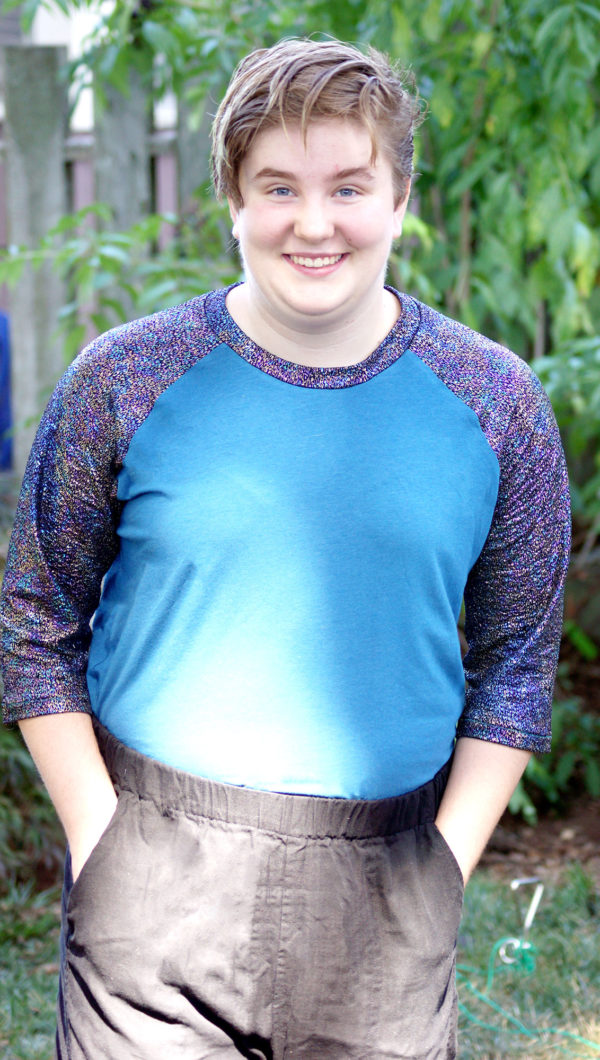
Have you taught anyone to sew? How did it go? Do you remember your first lessons?!


